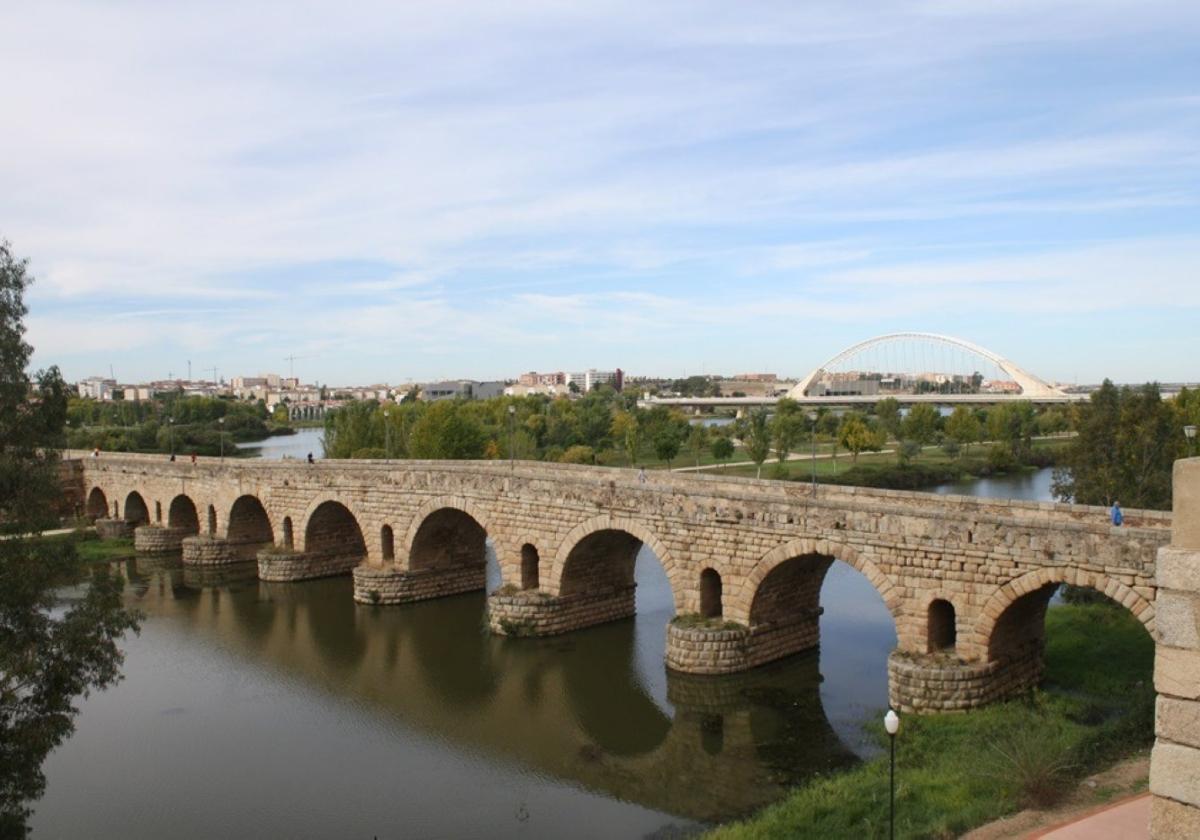

Sections
Highlight

Tony Bryant
Mérida
Friday, 25 April 2025, 14:45
It is that time of year when many people are planning weekend breaks and summer excursions away from the hustle and bustle of the Costa del Sol, especially the culturally minded who are in search of more than just sun, sea and nightlife. Those interested in Spain's monuments and architectural legacy have plenty of destinations to choose from. One of these is Mérida, the capital of Extremadura, located in the province of Badajoz. This ancient city boasts a wealth of cultural history that began in the Bronze age, and gained momentum with the arrival of the Romans, Visigoths and Islamic cultures.
The name of Mérida derives from the Latin 'ermerita' (meaning retired or veteran), a reference to its foundation by the emperor Augustus in 25 BCE, when the settlement accommodated retired soldiers.
Located close to the Portuguese border, Mérida is crossed by two rivers, the Guadiana and the Albarregas, which offer mild temperatures during spring, although they can rise to almost 40 degrees during the high season.
A meander through the centre of the city, declared a Unesco World Heritage Site in 1993, will reveal quiet streets, pretty plazas and plenty of green spaces to explore along the banks of the Guadiana river.
The city offers visitors the chance to marvel over its incredible Roman heritage, especially its theatre, which, 2,000 years after its construction, is still a venue used to host cultural activities, such as the summer international classical theatre festival. This festival takes place in July and August, and while the core focus is on theatre with Greco-Latin roots, it is also open to the performing arts in general and includes musical performances and film screenings.
Other sites of interest include the Puente Romano, the longest surviving Roman bridge in Spain. This incredible construction is annexed to the Arabic Alcázar fortress, and in this area, one will also discover Visigoth edifices and an underground Visigothic cistern.
Another important site is the remains of the 1st century aqueduct of the 'miracles', so named because its construction was said to have been awe-inspiring.
One of the main public areas of the Roman city which can still be seen, is the Forum, which contains the remains of the Temple of Diana, Trajan's Arch and the triumphal Arch of Tiberius. Another piece of ancient Roman history is the Circus Maximus, one of the finest preserved examples of a Roman circus, which was used for chariot racing and other sports games.
If this is not enough to satisfy one's appetite for the Roman Empire in Mérida, then there is also the national museum of Roman art, which houses a collection of mosaics and sculptures, among other things.
But it is not just Mérida's impressive archaeological wealth that offers a glimpse of its Roman era because, in June, the city hosts the week-long Emerita Lvdica, an event that recreates the daily life of that period. Monuments can be visited free during this exciting festival, which presents recreations of the violent confrontations of the gladiators, held in the amphitheatre, along with mock battles, costumed parades, street entertainers and a Roman craft and food market.
Of course, aside from its Roman heritage, Mérida has plenty of marvellous Renaissance, Gothic and Baroque architecture, such as the Concatedral de Santa María la Mayor, a Gothic church built on the site of a Visigoth cathedral between the 13th and 14th centuries. Other religious institutions worth visiting include the Nuestra Señora de la Antigua church, built between the 15th and 16th centuries, the 17th-century Santa Clara and the 18th-century Nuestra Señora del Carmen churches.
In addition to exploring Mérida's rich historical and artistic heritage, one can also discover and enjoy the surrounding natural environment, such as the Cornalvo natural park, located 18 kilometres away in the mountain ranges of Sierra Bermeja and Sierra del Moro. One of its most representative features is the reservoir, and the forest formations, home to numerous endangered species, like the black stork, Griffon vulture, imperial eagle, and black kite, among many others. The park, classified as a 'special protection area for birds (Zepa), has a visitor centre where guided hiking tours can be arranged.
The area surrounding the reservoir is one of Mérida's major recreational areas, especially in summer, due to the bathing areas that have been created, the aquatic sports activities and 'chiringuito' bars.
The 400-kilometre journey from Malaga takes approximately four hours by car, while Renfe offers various options to Mérida from the María Zambrano train station.
Iberia also offers flights from Malaga to Badajoz airport, which is 45 kilometres from Mérida.
Noticia Patrocinada
Publicidad
Daniel de Lucas y Josemi Benítez (Gráficos)
Jon Garay e Isabel Toledo
Paco Griñán | Málaga
Esta funcionalidad es exclusiva para registrados.
Reporta un error en esta noticia

Debido a un error no hemos podido dar de alta tu suscripción.
Por favor, ponte en contacto con Atención al Cliente.

¡Bienvenido a SURINENGLISH!

Tu suscripción con Google se ha realizado correctamente, pero ya tenías otra suscripción activa en SURINENGLISH.
Déjanos tus datos y nos pondremos en contacto contigo para analizar tu caso

¡Tu suscripción con Google se ha realizado correctamente!
La compra se ha asociado al siguiente email
Comentar es una ventaja exclusiva para registrados
¿Ya eres registrado?
Inicia sesiónNecesitas ser suscriptor para poder votar.